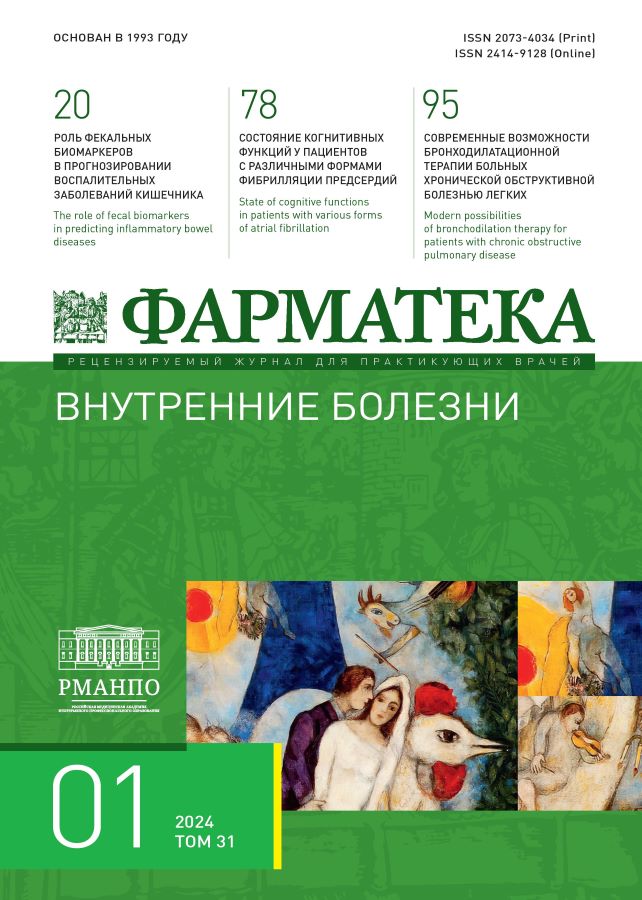Clinical center type in predicting patient enrollment
- 作者: Milovanov S.S.1
-
隶属关系:
- PE Milovanov Svyatoslav Sergeevich
- 期: 卷 31, 编号 1 (2024)
- 页面: 192-196
- 栏目: Medical management
- ##submission.datePublished##: 20.05.2024
- URL: https://journals.eco-vector.com/2073-4034/article/view/632318
- DOI: https://doi.org/10.18565/pharmateca.2024.1.192-196
- ID: 632318
如何引用文章
详细
Background. According to the literature, the final decision for the selection of clinical centers is made on the basis of subjective assessments – personal judgment and assumptions of the working team, which, as a rule, is associated to the lack of objective criteria for assessing a clinical center. The clinical site is responsible for both patient recruitment, in accordance with all protocol criteria and regulatory requirements, and for completing the patient recruitment agreed upon during the patient search phase providing successful achievement of targeted patient recruitment. One of the important conditions for successful patient recruitment is the high-quality selection of clinical centers at the feasibility stage, which requires objective tools to select clinical centers that will recruit patients in accordance with all protocol requirements and achieve the target goals of the clinical trial.
Objective. Searching for objective criteria for evaluating clinical centers providing targeted recruitment of patients.
Methods. Data obtained from 70 clinical centers located in 59 cities of Russia, Belarus and Ukraine (RUB region) generated in 4 clinical studies involving 622 patients were retrospectively analyzed. All 4 studies were successful in patient recruitment. The following values were calculated using the descriptive statistics method: mean, error of mean, standard deviation and coefficient of variation.
Results. Objective criteria for the selection of clinical centers (parameters and indicators) that make it possible to predict the upcoming enrollment of patients in the clinical center have been identified. Based on the grouping of parameters and indicators, 4 types of clinical centers were identified: type 1 – silent, type 2 – low-recruiting, type 3 – medium-recruiting and type 4 – high-recruiting, statistically significantly different in objective parameters of primary response time in days: 31.19±5 .27, 21.43±3.26, 23.64±4.04, 12.7±0.79, respectively, and according to objective indicators “Ratio of Primary Response Time in days/Estimated Patient Enrollment”: 4.56±1, 03, 2.42±0.43, 1.94±0.3, 1.345±0.099, respectively.
Conclusion. For the first time, objective criteria (parameters and indicators) for the selection of clinical centers have been proposed, allowing an objective assessment of the upcoming recruitment at the selected site. For the first time, types of clinical centers have been proposed based on selected objective criteria.
全文:
作者简介
Svyatoslav Milovanov
PE Milovanov Svyatoslav Sergeevich
编辑信件的主要联系方式.
Email: milovanovss@gmail.com
ORCID iD: 0000-0001-9843-6096
SPIN 代码: 8900-3380
Scopus 作者 ID: 58575569000
Researcher ID: ACK-8622-2022
Cand. Sci. (Med.), Independent researcher
俄罗斯联邦, Moscow参考
- Kibby M. Patient recruitment feasibility. Appl Clin Trails. 2011;20(6):80–7.
- Redeker С., Hanson D. Optimizing Patient Recruitment and Engagement Strategies June 9, 2022. URL: https://www.appliedclinicaltrialsonline.com/view/optimizing-patient-recruitment-and-engagement-strategies (last access: 01.08.2022).
- Fogel D.B. Factors associated with clinical trials that fail and opportunities for improving the likelihood of success: A review. Contempor ClinTrial Communicat. 2018;11:156–64.
- Lievre M. Premature discontinuation of clinical trial for reasons not related to efficacy, safety, or feasibility Commentary: Early discontinuation violates Helsinki principles. BMJ. 2001;322(7286):603–6. doi: 10.1136/bmj.322.7286.603.
- McDonald A.M., Knight R.C., Campbell M.K., et al. What influences recruitment to randomised controlled trials? A review of trials funded by two UK funding agencies. Trials. 2006;7(9). doi: 10.1186/1745-6215-7-9.
- Levett K.M., Roberts C.L., Simpson J.M., Morris J.M. Site-specific predictors of successful recruitment to a perinatal clinical trial. Clin Trials. 2014;11:584–89.
- Bieganek C., Aliferis C., Ma S. Prediction of clinical trial enrollment rates. PLoS One. 2022;17(2):e0263193. doi: 10.1371/journal.pone.0263193.
- Prediction of Recruitment Potential of Participating Centers in Clinical Trials by Standardized Translation of Selection Criteria and Queries From DRG Database (Pred-Inclus). URL: https://clinicaltrials.gov/ct2/show/NCT03019068 (last access: 01.10.2022).
- Gross D. A research agenda for understanding participation in clinical research. Res Nurs Health. 2006;29(3):172–75. Doi: 10.1002/ nur.20135.
- Бестужев-Лада И.В. Впереди XXI век: перспективы, прогнозы, футурологии. Антология современной классической прогностики 1959–1999. М., 2000. 480 с. [Bestuzhev-Lada, I.V. Ahead of the XXI century: prospects, forecasts, futurology. Anthology of modern classical prognostication 1959–1999. M., 2000, 480 p. (In Russ.)].
- Саватеев А.В., Белоцерковский М.В., Мосчиц-ка К., Палумбо Д. Оценка физибильности как краеугольный камень успешного клинического исследования. Качественная клиническая практика. 2013;2:37–46. [Savateev A.V., Belotserkovsky M.V., Moscicka K., Palumbo D. Physical assessment as a cornerstone of a successful clinical trial. Qualit Clin Pract. 2013;2:37–46. (In Russ.)].
- van den Bora R.M., Grobbeea D.E., Oostermana B.J., et al. Predicting enrollment performance of investigational centers in phase III multi-center clinical trials. Contempor. Clin Trial Communicat. 2017;7:208–16.
- Getz K., Predicting successful site performance, Appl Clin Trials. 2011;20(11). URL: http://www.appliedclinicaltrialsonline.com/predicting-successful-siteperformance (last access: 02.07.2022).
- Dane A., Ashraf S., Timmis J., et al. Barriers to patient enrolment in phase III cancer clinical trials: interviews with clinicians and pharmaceutical industry representatives. BMJ. Open 2022;12:e055165. doi: 10.1136/bmjopen-2021-055165.
- Yang E., O’Donovan C., Phillips J., et al. Quantifying and visualizing site performance in clinical trials. Contempor Clin Trial Communicat. 2018;9:108–14. doi: 10.1016/j.conctc.2018. 01.005.
- Haidich A.-B. Late-Starter Sites in Randomized Controlled Trials. J Clin Epidemiol. 2003;56(2003):408–15.








